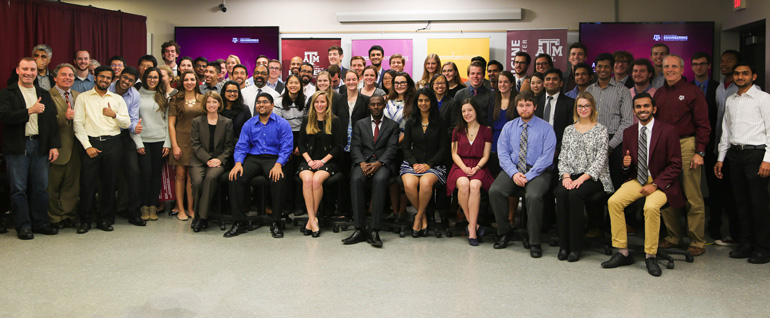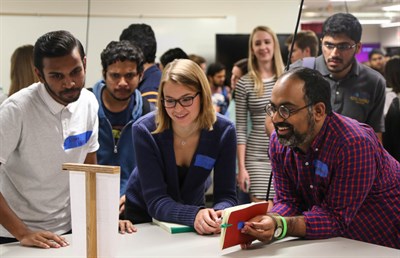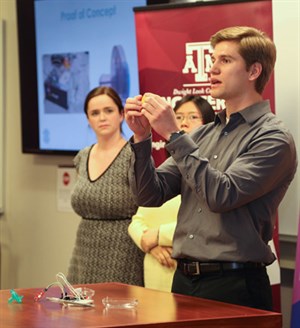
Dehydration is the second leading cause of death in infants, but what if a simple pacifier could prevent it? Student team DeHydraTect has developed a dehydration-detecting pacifier for just this cause through Aggies Invent: Pediatric Medical Applications.
Aggies Invent promotes an innovation and entrepreneurial mindset among students at Texas A&M University. It gathers invited students, provides them with the needs statements submitted by sponsors, allows them to self-select teams, gives them access to industry mentors and support from the Engineering Innovation Center (EIC) to create solutions and prototypes in 48 hours.
The focus of the most recent Aggies Invent was Pediatric Medical Applications. Texas Children’s Hospital, Texas A&M Health Science Center (TAMHSC) and Accenture sponsored the weekend’s event. Partnering with doctors and researchers from each of the sponsors, needs statement related to medical equipment, patient comfort, and diagnosing and correcting health problems were created. Teams were tasked with enhancing the effectiveness of care and comfort for infant and child patients.

More than 130 students applied for Aggies Invent: Pediatric Medical Applications and 62 were selected to participate. The students ranged from freshmen to doctoral candidates. Most participants are engineering students, but the group included medical students and a variety of other majors. Engaging different disciplines fosters development of solutions that are truly innovative and creative.
The winning team, DeHydraTect, was comprised of Scott Herting, Magy Avedissian, Jose Wippold, Grace Fletcher and Nga Tang. The pacifier they created contains a saliva analysis channel using biometric sensors to detect dehydration through detection of the variation in salinity. The pacifier relays data to a mobile or computer application for parents and doctors to analyze.
Second place went to the team of Tessa Bronez, Clayton Kruger, Robert Hunt and Sima Amin for its product, iCare, a screening device to better detect retinopathy of prematurity in infants. Retinopathy of prematurity is an abnormal blood vessel that can lead to detached retinas and blindness. The team’s product captures images of the eye to aid in the diagnosis and improve patient comfort during the process.
LiteAlert came in third place with an infant movement detector. Sensors are placed on infants in the NICU and integrated with an alarm system algorithm. The detector will prevent false alarms from infant movement; therefore allowing caretakers to respond more efficiently when real health alarms are sounded. Team members included Jessica Brezicha, Jessica Hanson, Kristen Calhoun and Maximiliano Ortiz.
This Aggies Invent was judged by Kristen Banks, managing director for Accenture; Dr. Balakrishna Haridas, professor of practice and head of entrepreneurship programs for the Texas A&M Engineering Experiment Station; Dr. Jon Mogford, vice chancellor for research at Texas A&M; Dr. Mark Sicilio, interim department chair and assistant professor of pediatrics for TAMHSC and Dr. Neal Spears, pediatrics specialist for St. Joseph Health System.
“Having students come out of the university and be able to apply this innovation experience immediately is an important skill,” said Banks. “It makes them so valuable to any organization.”

The judging panel was so impressed with the results of the competition that Mogford decided to award each team a $250 prize. The top three teams received $1,000, $750 and $500, respectively, for their awards.
The innovation does not stop at the awards. All teams are invited to continue working on their project and will have access to the EIC and mentors to help them improve their idea and create more advanced prototypes. Rodney Boehm, event organizer, director of Aggies Invent and associate professor of practice, continues to provide guidance to each team throughout this process. They also have the opportunity to work with Startup Aggieland for additional assistance.
Sicilio said he hopes these ideas will be presented at the TAMHSC Grand Rounds and at medical conferences.
“I’m amazed and honored to help with the collaboration between engineering and medicine,” Sicilio stated. “This was amazing.”